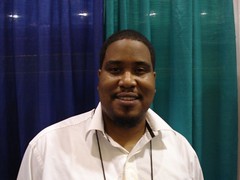The Caldecott Medal was announced yesterday for "The Invention of Hugo Cabret," by Brian Selznick. I'd just finished reading (assimilating?) the book, which is an artful arrangement of text and graphics. Interestingly, the book was a candidate both for the Newbery Medal, for a written novel, and the Caldecott, for a graphic illustration book, showing a new interest in a greater blending of the two mediums for telling a story. Unlike a graphic novel, with its steady progression of graphic panels, or a typical illustrated novel with perhaps only a graphic plate introducing each chapter, 'Hugo' is interspersed with multiple pages of text followed by one and two page spreads of artistic, shaded black and white drawings. Sometimes the drawings taken together illustrate only fleeting seconds in the action of the storyline, like successive still frames of a motion picture. Indeed, part of the storyline deals with the lost career of a French cinematographer dating from the early years of motion pictures.
Hugo, a young boy, lives in the apartment of his uncle, which is buried in the labyrinthine inner passages of the massive central train station in Paris. Hugo's father has died in a fire at a museum where he worked, and Hugo has been taken in and trained by his uncle, to assist him in maintaining all the clocks in the train station in good, accurate condition. However, the uncle has mysteriously disappeared, and Hugo struggles to keep the clocks running. He does not want to report his uncle's disappearance for fear he'll be turned out of the station, but he has to pilfer his food from shop owners in the station just to survive. In addition to his timekeeper duties, the mechanically talented Hugo is trying to restore a mechanical man, an automaton, that his father found in museum discards and gave to him. The automaton, a gear-driven marvel that can write and draw pictures, becomes the key to the mystery surrounding Georges Melies, the famous cinematographer, now a poor, novelty shop owner in the train station, and his adopted daughter, Isabelle, Hugo's newfound friend.
Five hundred pages of story and art that go together seamlessly and in just a couple of evenings of intriguing reading.
Viewing: Blog Posts Tagged with: MG/YA novel, Most Recent at Top [Help]
Results 1 - 3 of 3
Blog: gael writer (Login to Add to MyJacketFlap)
JacketFlap tags: MG/YA novel, graphic novels, MG/YA novel, Add a tag
Blog: gael writer (Login to Add to MyJacketFlap)
JacketFlap tags: MG/YA novel, sports, mystery, MG/YA novel, Add a tag
Just finished "Edenville Owls," by Robert Parker, a recent MG/YA novel about an indie club of Middle School basketball players who take on local JV school teams, the team leader's journey toward discovering his first girlfriend, and a diabolical figure threatening their eighth grade teacher. The author has published over fifty bestselling adult detective stories before this, his first book for young readers. The story is set right after WWII, so I can relate to the boy's descriptions of his favorite radio stories and other background. The mystery part of "Owls" is a little bizarre, but the story has its charms.
I enjoyed the nostalgic asides of the narrator, our protagonist, talking about the radio shows he liked—those old adventure and detective stories, even the commercial jingles mentioned struck a memory chord, as well as the double-feature "B" movies appearing at the local theater on the weekend. Parker fed some of these nostalgia trips into the story as two-page chapters, in italics, to set them off from the ongoing plot line. While it was interesting to me revisiting that old stuff, I wonder how well it worked for a young reader today? Well enough, I suppose, since the story included lots of poignant moments, and the ongoing excitement of the basketball competition, and the mystery. On the "short" side, not much literary irony to mull over, but hey, it was a pretty good read.
Blog: Just One More Book Children's Book Podcast (Login to Add to MyJacketFlap)
JacketFlap tags: Podcast, Interviews, IRA2007, Gabriel Benn, H.E.L.P., Hip Hop Educational Literacy Program, Add a tag
 This episode of Just One More Book! is part of our showcase coverage of the International Reading Association’s 52nd annual conference.
This episode of Just One More Book! is part of our showcase coverage of the International Reading Association’s 52nd annual conference.
Mark speaks with Hip Hop M.C. and curriculum developer Gabriel Benn about H.E.L.P., the Hip-Hop Educational Literacy Program –- a creative reading program that combines the power of Hip-Hop with proven reading instruction — and gives a short performance.
Participate in the conversation by leaving a comment on this interview, or send an email to [email protected].
Tags:Gabriel Benn, H.E.L.P., Hip Hop Educational Literacy Program, IRA2007Gabriel Benn, H.E.L.P., Hip Hop Educational Literacy Program, IRA2007

